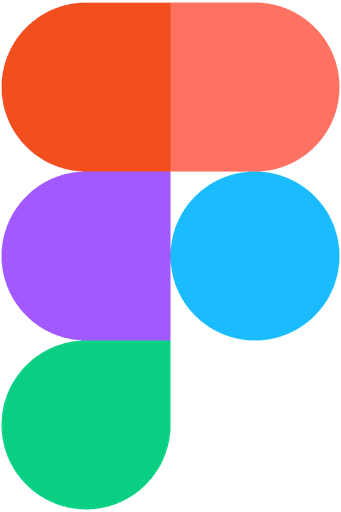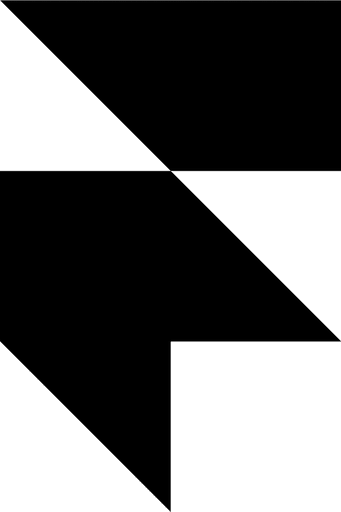Maxon.net Redesign
Led IA and navigation overhaul for Maxon’s global marketing site, streamlining product discovery and trial/purchase flows.



Headquarters
Headquarters
Bad Homburg, Duetschlad
Role
Role
Senior UX/UI Designer — led IA and navigation redesign, product detail optimization, and pricing/purchase page refresh.
Industry
Industry
E-commerce
Team
Team
Team: 1 PM, 2 marketers, 3 developers.
Company size
Company size
400+
Challenge
The global Maxon marketing site had grown fragmented: product info was buried, navigation inconsistent, and trial/purchase flows unclear. This created friction for new users and diluted conversion.
- Overwhelming global navigation
- Inconsistent page layouts across tools
- Poor visibility of support & tutorials
- Mobile experience didn’t scale
Results
The redesigned the site saw a 25% increase in conversion rates and a 50% reduction in bounce rates. The new intuitive navigation and clean interface improved product discoverability, leading to a 35% increase in average order value. Customer feedback was overwhelmingly positive, with satisfaction ratings rising from 3.8 to 4.7 stars.
35%
Improved onboarding process
25%
Increase in user retention
84%
Increase in time spent on website
Process
Research & Insights:
Conducted competitive benchmarking (Adobe, Autodesk, Blackmagic)
Heuristic review showed:
6+ clicks needed to reach core product info
Inconsistent CTAs across product lines (“Try now,” “Download trial,” “Get started”)
Card sorting + tree testing confirmed users were confused by overlapping product categories
Design Approach:
Information Architecture: Rebuilt top-level categories, separating Products, Solutions, Learn, and Support
Navigation: Designed global persistent nav with clear hierarchy + quick links to key actions (Try, Buy, Support)
Product Pages: Standardized structure with consistent overview, features, specs, and CTA placement
Pricing/Checkout: Streamlined layout to emphasize trial → purchase funnel, clarified student/educator eligibility
Design System: Created product cards, nav bars, and pricing modules as reusable DS elements
Research & Insights:
Conducted competitive benchmarking (Adobe, Autodesk, Blackmagic)
Heuristic review showed:
6+ clicks needed to reach core product info
Inconsistent CTAs across product lines (“Try now,” “Download trial,” “Get started”)
Card sorting + tree testing confirmed users were confused by overlapping product categories
Design Approach:
Information Architecture: Rebuilt top-level categories, separating Products, Solutions, Learn, and Support
Navigation: Designed global persistent nav with clear hierarchy + quick links to key actions (Try, Buy, Support)
Product Pages: Standardized structure with consistent overview, features, specs, and CTA placement
Pricing/Checkout: Streamlined layout to emphasize trial → purchase funnel, clarified student/educator eligibility
Design System: Created product cards, nav bars, and pricing modules as reusable DS elements












Header Design
The Maxon header is a sticky, minimal top nav designed for clarity, speed, and product access across a growing creative suite.
Clean, top-level links: Products, Try, Learn, Support, Company
Designed around user intent and stage in journey (e.g., discovery vs. help)
Visual tiles for each product (Cinema 4D, Redshift, ZBrush, etc.)
Hover-based preview with icons and brief labels
Supports both first-time visitors and returning users
Sticky behavior for constant access
Language switcher and account/login quick access
Fully responsive: condenses into hamburger on mobile with expandable panels
Keeps navigation consistent and visible across all pages
Optimized for fast scanning and decision-making
Balanced focus between product promotion and user support
Header Design
The Maxon header is a sticky, minimal top nav designed for clarity, speed, and product access across a growing creative suite.
Primary Nav Structure:
Clean, top-level links: Products, Try, Learn, Support, Company
Designed around user intent and stage in journey (e.g., discovery vs. help)
Mega Menu (Products):
Visual tiles for each product (Cinema 4D, Redshift, ZBrush, etc.)
Hover-based preview with icons and brief labels
Supports both first-time visitors and returning users
Functional Details:
Sticky behavior for constant access
Language switcher and account/login quick access
Fully responsive: condenses into hamburger on mobile with expandable panels
UX Considerations:
Keeps navigation consistent and visible across all pages
Optimized for fast scanning and decision-making
Balanced focus between product promotion and user support









🏷️ Pricing Card Design:
🧩 Structure & Layout:Title & Plan Name: Clearly labeled (e.g., “Maxon One”).
Price Display: Emphasized in bold (monthly or annual).
Feature List: 3–5 concise bullets, sometimes with icons.CTA: Prominent
“Subscribe” or “Start Trial” button.Optional Tag: Labels like “Most Popular”
guide decisions.🎨 Visual Design:Neutral backgrounds with strong
brand-red CTAs.Balanced typography for hierarchy.Occasional card borders or highlights to distinguish tiers.📱 Responsive:Stacked vertical layout on mobile.Buttons remain visible and thumb-friendly.The design is simple, consistent, and conversion-focused — but could benefit from more visual hierarchy and emphasis on plan comparisons.
🏷️ Pricing Card Design:
🧩 Structure & Layout:Title & Plan Name: Clearly labeled (e.g., “Maxon One”).
Price Display: Emphasized in bold (monthly or annual).
Feature List: 3–5 concise bullets, sometimes with icons.CTA: Prominent
“Subscribe” or “Start Trial” button.Optional Tag: Labels like “Most Popular”
guide decisions.🎨 Visual Design:Neutral backgrounds with strong
brand-red CTAs.Balanced typography for hierarchy.Occasional card borders or highlights to distinguish tiers.📱 Responsive:Stacked vertical layout on mobile.Buttons remain visible and thumb-friendly.The design is simple, consistent, and conversion-focused — but could benefit from more visual hierarchy and emphasis on plan comparisons.



🎬 Cinema 4D Page – Design & Development Overview
The redesigned Cinema 4D product page was built to elevate the visual storytelling of Maxon’s flagship tool while streamlining the conversion journey.
🎬 Cinema 4D Page – Design & Development Overview
The redesigned Cinema 4D product page was built to elevate the visual storytelling of Maxon’s flagship tool while streamlining the conversion journey.
Design Highlights:
Hero Section: Large fullscreen visuals with subtle motion, emphasizing C4D’s power and creativity.
Content Blocks: Modular layout showcasing key features (e.g., MoGraph, rendering, animation) using image-text pairs and anchored scroll navigation.
Interactive Modules: Embedded videos and animated previews to give users an immediate sense of the tool in action.
Pricing Card Integration:
Strategically placed after the core feature highlights.
Clean and bold design with clear pricing tiers for C4D or Maxon One.
Includes monthly and annual options, and a strong primary CTA (“Subscribe” or “Start Trial”).
Designed for responsiveness and conversion — sticky CTAs remain accessible on scroll.
Development Notes:
Built using a flexible component system for reusability across other product pages.
Optimized for performance, accessibility, and localization (multi-language support).
Seamless CMS integration for future content updates by the marketing team.
This page merges high-impact storytelling with functional clarity, driving both interest and subscription.






💡 Reflection
This project brought together design, strategy, and systems thinking at scale. I learned how to balance deep product complexity with user clarity — and how to elevate a visual brand while staying conversion-driven.
“This wasn’t just a website redesign. It was a reset for how users experience Maxon as a creative ecosystem.”
💡 Reflection
This project brought together design, strategy, and systems thinking at scale. I learned how to balance deep product complexity with user clarity — and how to elevate a visual brand while staying conversion-driven.
“This wasn’t just a website redesign. It was a reset for how users experience Maxon as a creative ecosystem.”



Conclusion
Conclusion
Revamping the e-commerce website proved to be a game-changer in enhancing user experience and driving sales. By simplifying the navigation and checkout process, we created a more enjoyable shopping experience that significantly boosted conversion rates and customer satisfaction. This project highlights the critical role of UX design in the success of e-commerce platforms.
Revamping the e-commerce website proved to be a game-changer in enhancing user experience and driving sales. By simplifying the navigation and checkout process, we created a more enjoyable shopping experience that significantly boosted conversion rates and customer satisfaction. This project highlights the critical role of UX design in the success of e-commerce platforms.





